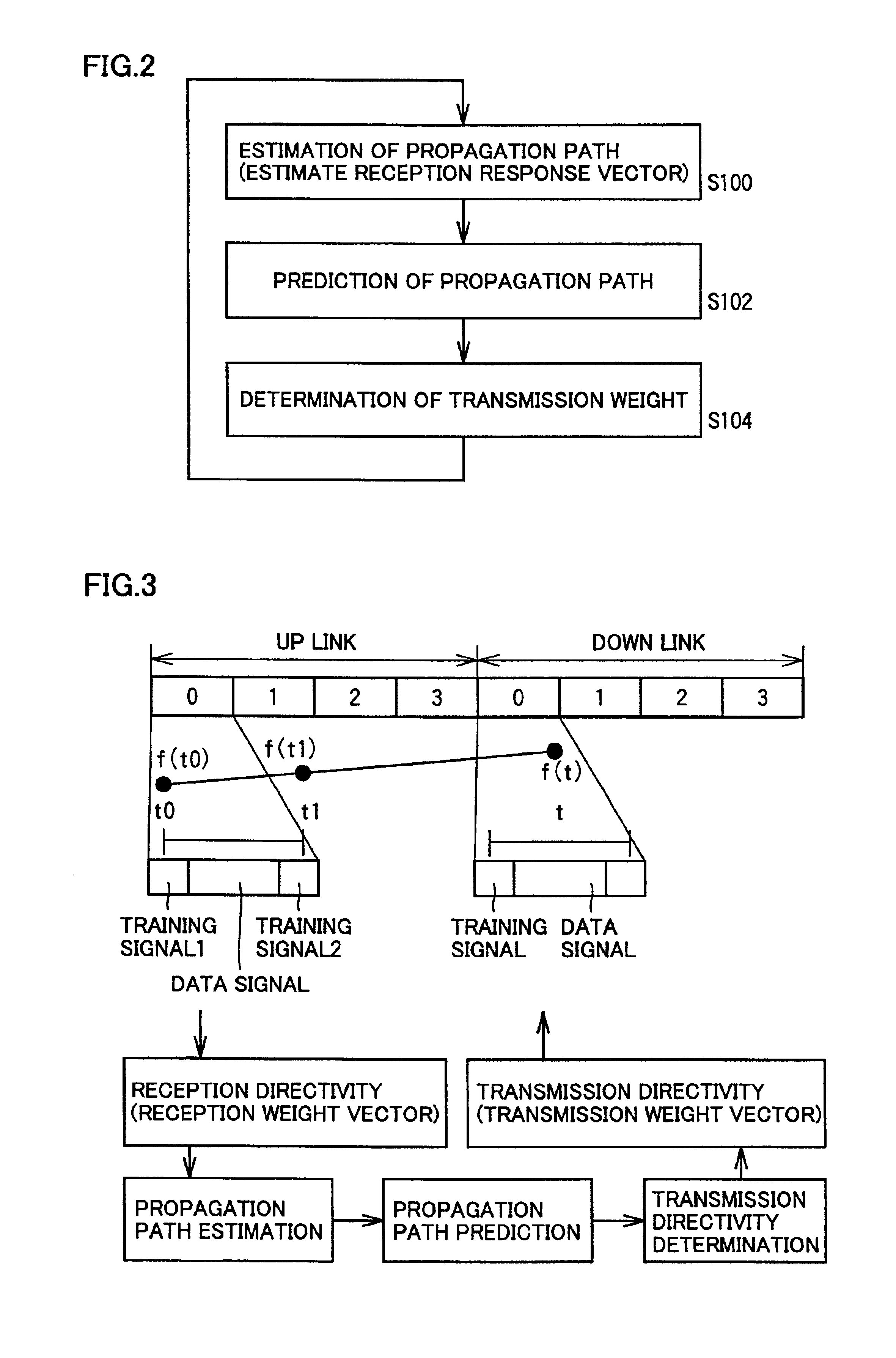Radio equipment capable of real time change of antenna directivity and doppler frequency estimating circuit used for the radio equipment
a radio equipment and directivity technology, applied in the direction of substation equipment, spatial transmit diversity, multi-antenna systems, etc., can solve the problems of affecting the communication of regular users, requiring a complicated process, and reducing transmission directivity, so as to achieve satisfactory control of transmission directivity and correct estimation of transmission response vectors
- Summary
- Abstract
- Description
- Claims
- Application Information
AI Technical Summary
Benefits of technology
Problems solved by technology
Method used
Image
Examples
Embodiment Construction
[0129]FIG. 1 is a schematic block diagram representing a radio equipment (radio base station) 1000 of a PDMA base station in accordance with an embodiment of the present invention.
[0130]In the configuration shown in FIG. 1, in order to distinguish a user PS1 from a user PS2, four antennas #1 to #4 are provided. The number of antennas, however, may be generally represented as N (N: natural number).
[0131]In the transmission / reception system 1000 shown in FIG. 1, a reception unit SR1 receiving signals from antennas #1 to #4 and separating a signal from a corresponding user (for example, user PS1), and a transmitting unit ST1 for transmitting a signal to user PS1 are provided. Connection between antennas #1 to #4 and reception unit SR1 or transmission unit ST1 is selectively switched by switches 10-1 to 10-4.
[0132]More specifically, reception signals RX1(t), RX2(t), RX3(t) and RX4(t) received by respective antennas are input to reception unit SR1 through corresponding switches 10-1, 10-...
PUM
 Login to View More
Login to View More Abstract
Description
Claims
Application Information
 Login to View More
Login to View More - R&D
- Intellectual Property
- Life Sciences
- Materials
- Tech Scout
- Unparalleled Data Quality
- Higher Quality Content
- 60% Fewer Hallucinations
Browse by: Latest US Patents, China's latest patents, Technical Efficacy Thesaurus, Application Domain, Technology Topic, Popular Technical Reports.
© 2025 PatSnap. All rights reserved.Legal|Privacy policy|Modern Slavery Act Transparency Statement|Sitemap|About US| Contact US: help@patsnap.com



